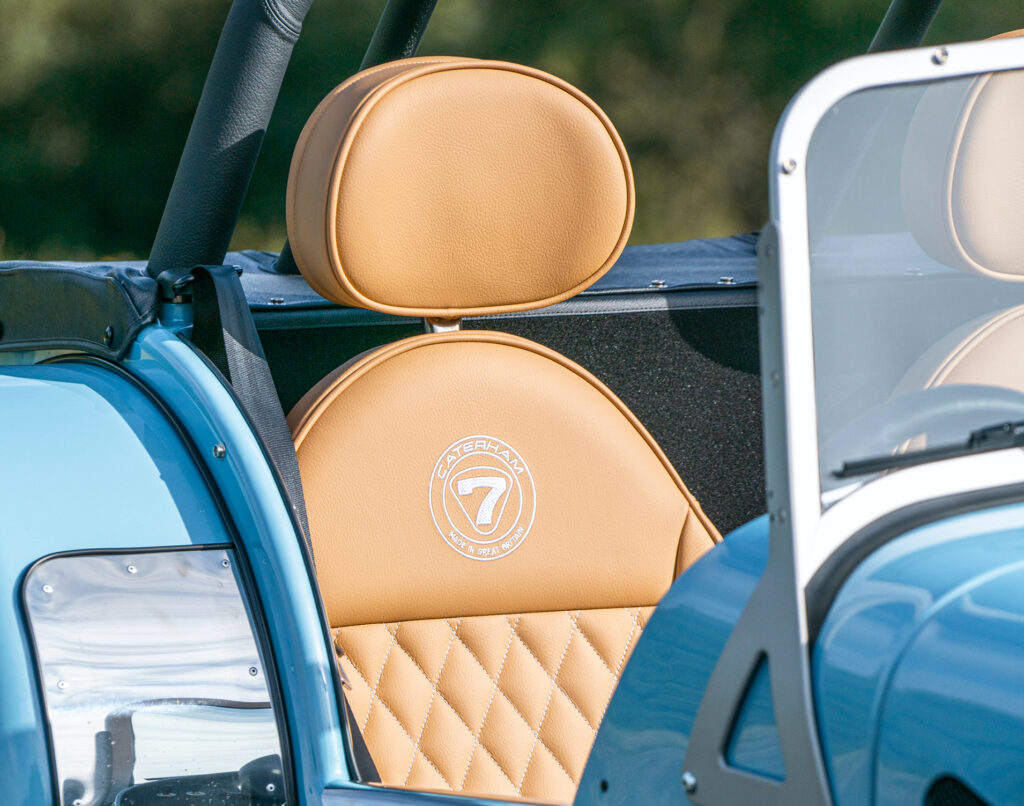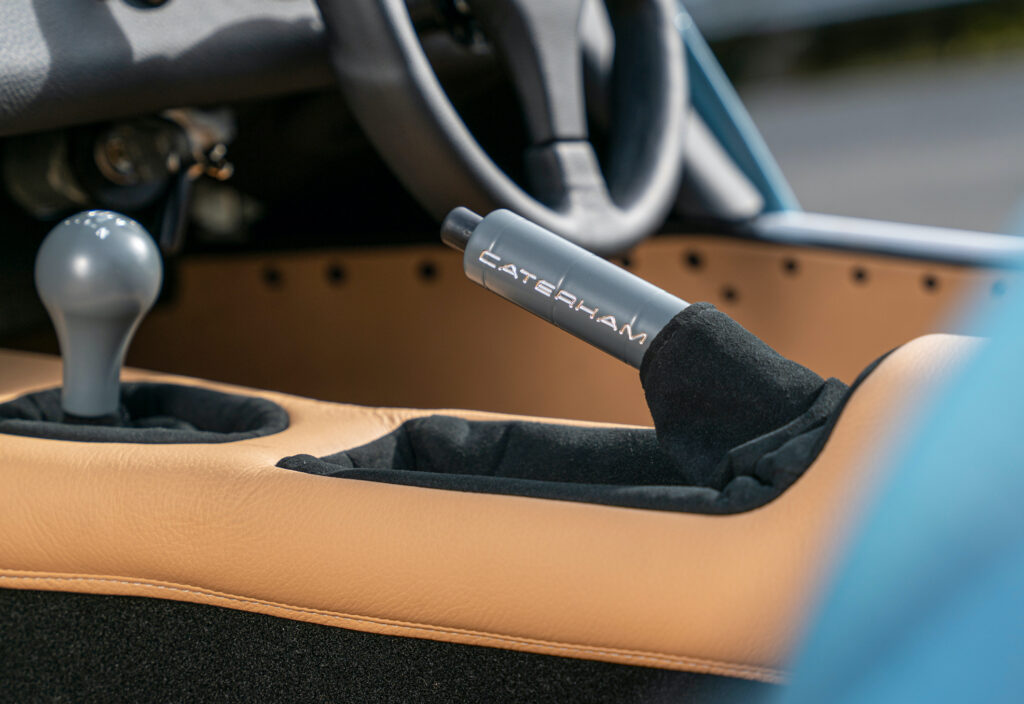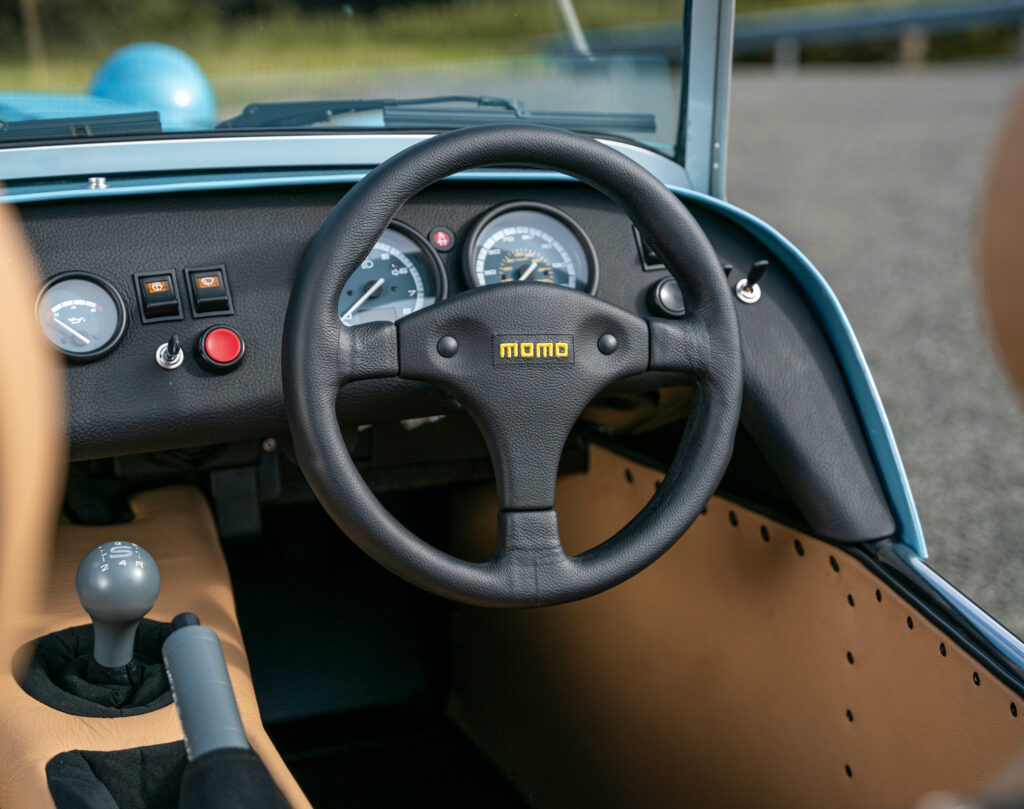Caterham has a new entry point to the Seven range – the 170S. JACK EVANS finds out what it’s like.
The rich and varied world of the Caterham Seven. Though it’s essentially based around one car, Caterham’s line-up has kept expanding to include headline-grabbers like the supercar-beating 620R or the middle-ground 420. The 310 has won acclaim for being one of the more approachable cars in the Seven range, too.
There’s now a new entry point to the range – the Seven 170. Acting as a replacement for the 160, it aims to provide a fun, low-cost door into the Caterham world – but what is it like? We’ve been finding out.
Distinctive Caterham looks aside, the 170 has quite a number of differences compared with the rest of the range. It’s got a turbocharged Suzuki-sourced engine, for one – more on that later – which really does transform the whole experience.

Much like the rest of the Seven range, however, you can now specify it in either road-going ‘S’ or track-focused ‘R’ layouts – the former of which we’ve got here – while you’ve got the option of either having it built for you at Caterham’s factory for a fee or, if you’re handy with the spanners, you can build it from the comfort of your own home.
Sitting underneath the 170’s bonnet is an engine of distinctively compact proportions. At just 660cc, it’s far smaller than any other engine in the Seven range while at 84bhp, its output is quite small too. Sourced from Suzuki, it gives the 170S a power-to-weight ratio of 180bhp per tonne, or 190bhp per tonne in the lightweight ‘R’ version.
Zero to 60mph is dealt with in 6.9 seconds and flat out the 170 will manage 105mph. Though these figures may not set the performance world alight, as with all Sevens the on-road experience is heightened due to your proximity to the road and the world around you. At just 465.5kg, the 170 is a true featherweight too, and actually takes the title as the lightest Seven in the range.

The 170 starts up in an uncharacteristically quiet fashion. With other Caterhams, pressing the red button on the dash ignites a snarling, metallic blare from the exhaust but with the 170 it’s a far more subdued affair. The differences don’t end there, either, as the little Suzuki engine chugging away ahead of you isn’t as keen to zip to the red line as other engines in the range, which leaves you to drive in a more relaxed, laid-back manner.
The ride is good, mind you, and this only elevates this unhurried, carefree style of motoring. It’s completely different to anything else in the Caterham range but that’s no bad thing, it’s just quite the change. The turbos flutter and whistle ahead of you while you make progress, but the engine they’re attached to doesn’t really appreciate being hustled – it’s at its best when being whisked along at easy speeds.
Well, it looks like a Seven, doesn’t it? Out on the road, there are few people capable of ignoring the little 170 which, despite its compact size, never fails to attract attention or a smile from a bystander. It stands out from the rest of the Seven range thanks to its 14-inch polished alloy wheels with Avon ZT7 tyres, while our car also came with LED headlights and rear lights which are a real plus for the Seven as it makes you far more visible to traffic at night.

It’s worth noting that the 170 actually complies with Japan’s Kei car regulations, meaning that not only is it the lightest Seven, but the smallest. In fact, it’s 105mm narrower than anything else in the range.
Though sparse, what is inside the cabin of the 170S is finished beautifully. The diamond-stitched seats on our test car were an excellent addition, which completely transformed the look and feel of the cabin. The Momo steering wheel, as it is in all Caterhams, feels excellent, and the narrower-than-usual layout means that even average-sized people may struggle to get their feet on the pedals comfortably.
The 170S brings regular seatbelts, too, which are the ones to go for if you’re planning on using your 170 regularly – the three-point harnesses found on ‘R’ versions can prove annoying if you’re jumping in and out frequently.

As you might imagine, there aren’t a huge amount of extras aboard a Caterham. You’ll find no ultra-wide infotainment system nor a crystal-clear digital dashboard. Instead, revel in the standard-fit heater which cascades warm air onto your legs, or the chunky dashboard buttons which control aspects such as lights.
The gauges are completely analogue but are clear and easy to read, though in typical Caterham fashion you need to lean a little to your left in order to read the fuel levels properly. Nothing is out of place or badly made, mind you, and in the world of overcomplicated dashboards it feels wonderfully stripped back.
The Caterham 170S is an interesting prospect. For those who haven’t yet experienced a Seven, it’ll prove as a great entry point to the firm, giving a flavour of what’s on offer without any real edge. Those who have already been in quicker and more potent Caterhams may find themselves wanting more, however.
The Suzuki engine completely changes the Seven experience. Rather than pushing for each and every corner like your life depends on it, the 170S encourages you to take a more relaxed line, enjoying the experience and making the most of the great outdoors. If a slower – but still exciting – turn of pace is what you’re after, then the 170S could be the Seven for you.











